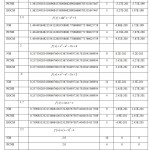V.B. Kumar Vatti1, Ramadevi Sri1 and M.S. Kumar Mylapalli2
1Dept. of Engineering Mathematics, Andhra University, Visakhapatnam, India
3Dept. of Engineering Mathematics, Gitam University, Visakhapatnam, India
Corresponding author Email: drvattivbk@yahoo.co.in
DOI : http://dx.doi.org/10.13005/ojcst/10.01.19
Article Publishing History
Article Received on : March 03, 2017
Article Accepted on : May 17, 2017
Article Published : 21 Mar 2017
Article Metrics
ABSTRACT:
In this paper, we suggest and discuss an iterative method for solving nonlinear equations of the type f(x)=0 having eighteenth order convergence. This new technique based on Newton’s method and extrapolated Newton’s method. This method is compared with the existing ones through some numerical examples to exhibit its superiority.
AMS Subject Classification: 41A25, 65K05, 65H05.
KEYWORDS:
Iterative method; Nonlinear equation; Newton’s method; Convergence analysis; Higher order convergence
Copy the following to cite this article:
Vatti V. B. K, Sri R, Mylapalli M. S. K. Eighteenth Order Convergent Method for Solving Non-Linear Equations. Orient.J. Comp. Sci. and Technol;10(1)
|
Copy the following to cite this URL:
Vatti V. B. K, Sri R, Mylapalli M. S. K. Eighteenth Order Convergent Method for Solving Non-Linear Equations. Orient.J. Comp. Sci. and Technol;10(1). Available from: http://www.computerscijournal.org/?p=4905
|
Introduction
We consider finding the zero’s of a nonlinear equation
f(x)=0 (1)
Where f: D c R→R is a scalar function on an open interval D and f(x) may be algebraic, transcendental or combined of both. The most widely used algorithm for solving (1.1) by the use of value of the function and its derivative is the well known quadratic convergent Newton’s method (NM) given by

starting with an initial guess x0 which is in the vicinity of the exact root x*. The efficiency index of Newton’s method is 2√2 = 1.4142. The Extrapolated Newton’s method (ENM) suggested by V.B.Kumar, Vatti et.al [11] which is developed by extrapolating Newton’s method (1.2) introducing a parameter ‘αn‘ given by.
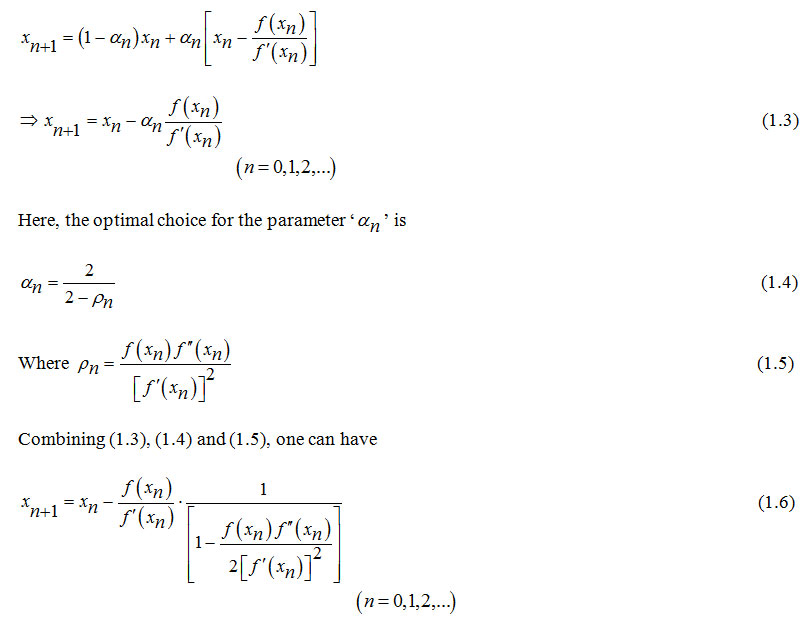
Which is same as Halley’s method having third order convergence requires three functional evaluations. The efficiency index of this method is 3√3=1.4422.
A three step Predictor-corrector Newton’s Halley method (PCNH) suggested by Mohammed and Hafiz [10] (see[1to10]), is given by:
For a given x0, we compute xn+1 by using.

This method has eighteenth order convergence and its efficiency index is 8√18=1.4352.
In section 2, we develop and discuss a three step iterative method and the convergence criteria is discussed in section 3. Few numerical examples are considered to show the superiority of this method in the concluding section.
Eighteenth Order Convergent Method (Eocm)
Consider x* be the exact root of (1.1) in an open interval D in which f(x) is continuous and has well defined first and second derivatives. Let xn be the nth approximate to the exact root x* of (1.1) and.
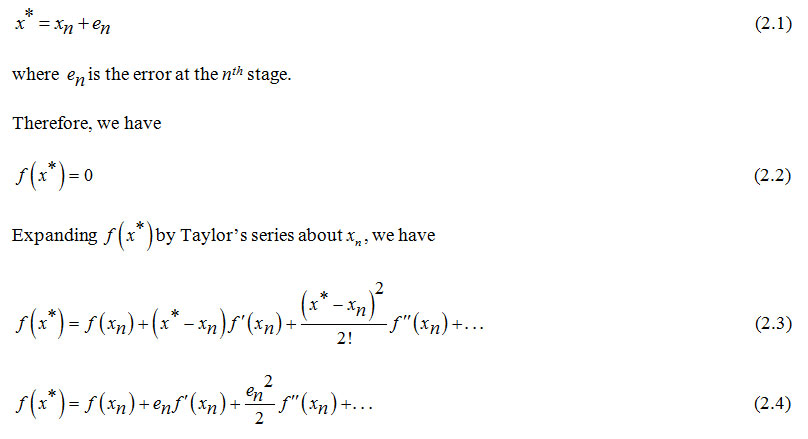
Assuming en is small enough and neglecting higher powers of en starting from onwards, we obtain from (2.2) and (2.4) as
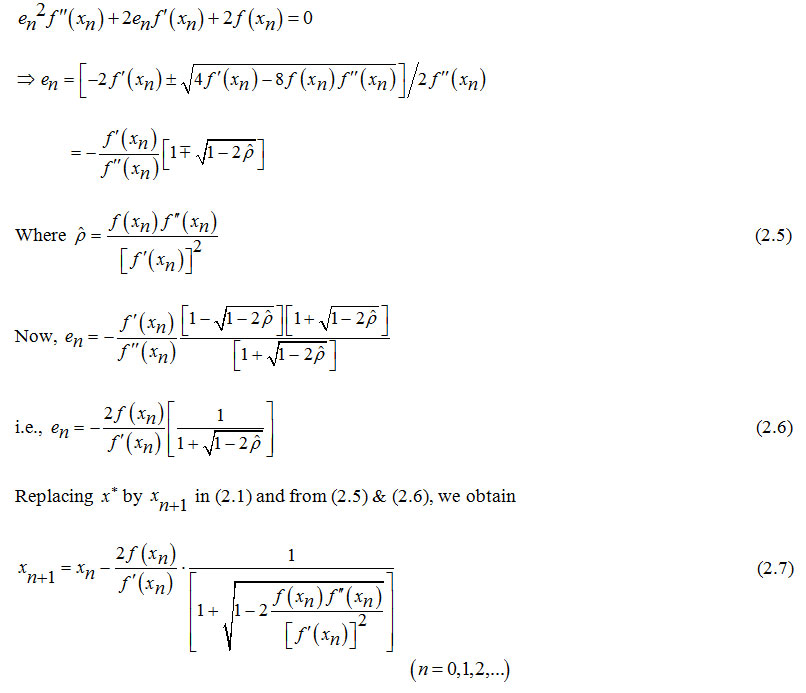
This scheme (2.7) allows us to propose the following algorithm with the method (1.2) as the first step and the method (1.6) as the second step.
Algorithm 2.1: For a given x0, compute xn+1 by the iterative schemes.
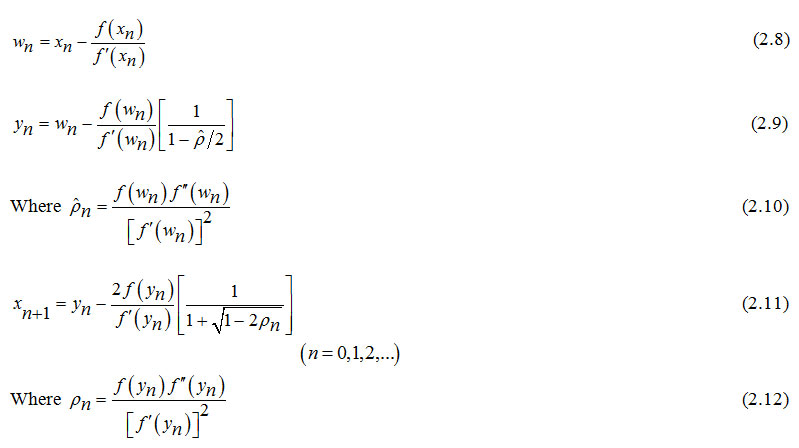
This algorithm (2.1) requires 3 functional evaluations, 3 of its first derivatives and 2 of its second derivatives and can be called as Eighteenth order Convergent Method (EOCM).
Convergence Criteria
Theorem 3.1.Let x*∈D be a single zero of a sufficiently differentiable function f: D⊂R→R for an open interval D. If x0 is in the vicinity of x*, then the algorithm (2.1) has eighteenth order convergence.
Proof: Let x* be a single zero of (1.1) and

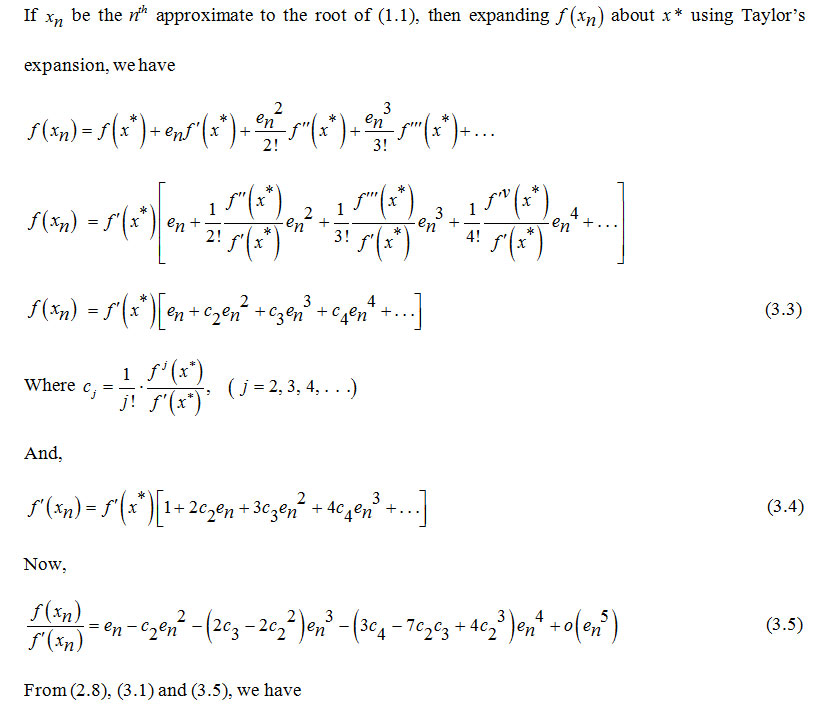
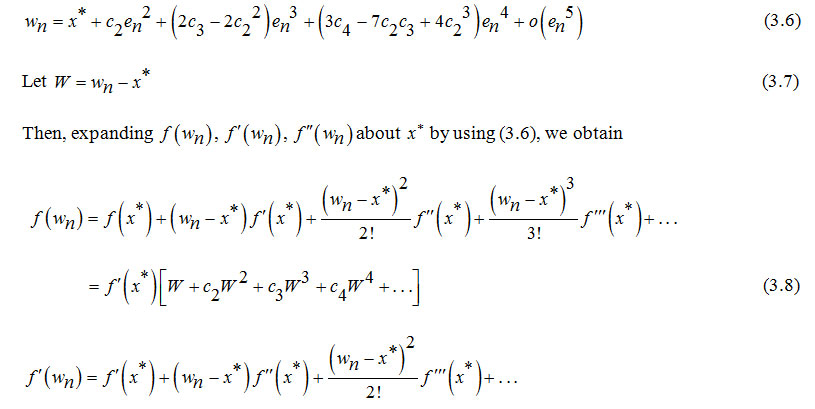
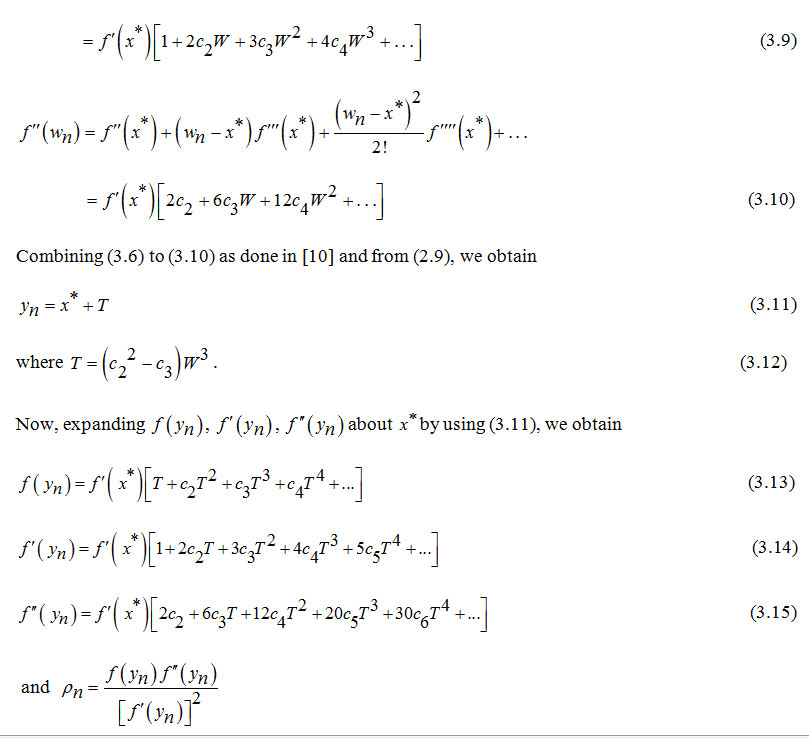
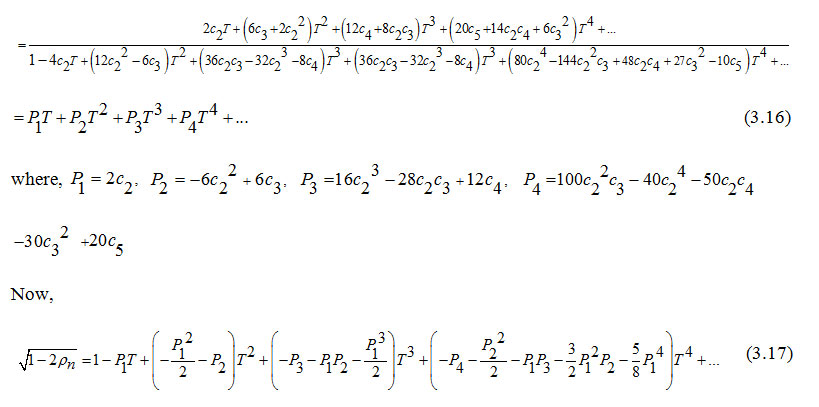
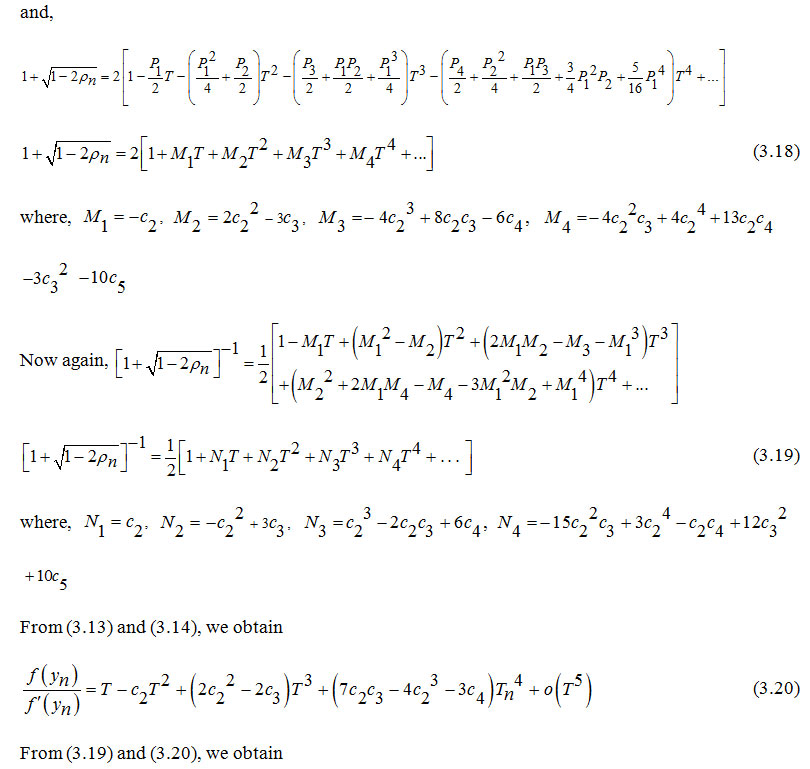
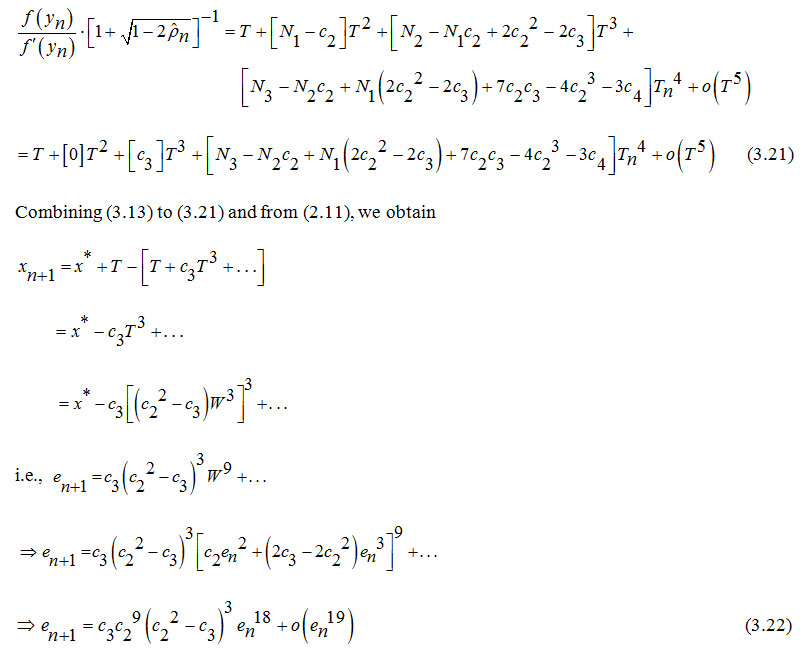
Hence, this method has eighteenth order convergence and its efficiency index is 8√18=1.4352.
Case 3.1: By expanding √1-2pn appearing in the denominator of the third step of algorithm 2.1, we obtain

where pn is as given in (2.12).
Considering the first degree and second degree terms of the expression lying within the square brackets of the formula (3.23) and from the algorithm 2.1, we have the following two more algorithms.
Algorithm 3.1: For a given x0, compute xn+1 by the iterative schemes
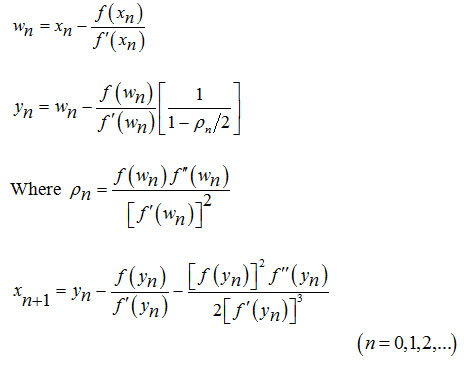
which is same as the eighteenth order convergent method proposed by Mohammed and Hafiz [10].
Algorithm 3.2: For a given x0, compute xn+1 by the iterative schemes
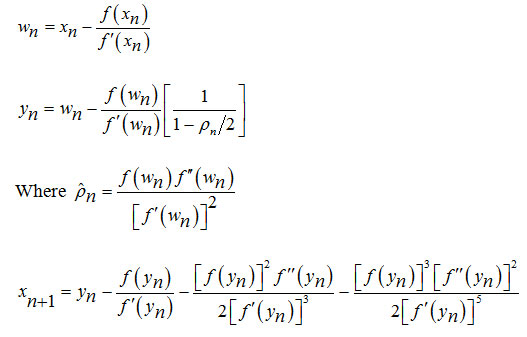
As done in convergence criteria above in section 3, one can easily obtain en+1 αen18. Therefore, the algorithm (3.2) has eighteenth order convergence.
Numerical Examples
We consider the same examples considered by Mohammed and Hafiz [10] and compared EOCM with NM and PCNH methods. The computations are carried out by using mpmath-PYTHON software programming and comparison of number of iterations for these methods are obtained such that

The above computational results exhibit the superiority of the new method EOCM over the Newton’s method and PCNH method in terms of number of iterations and accuracy.
References
- I.K. Argyros, S.K. Khattri, An improved semi local convergence analysis for the Chebyshev method, Journal of Applied Mathematics and computing, 42, No-s: 1, 2 (2013), 509-528, doi: 10.1007/s12190-013-0647-3.
CrossRef
- M.A. Hafiz, Solving nonlinear equations using steffensen-type methods with optimal order of convergence, Palestine Journal of Mathematics, 3, No: 1 (2014), 113-119.
- M.A. Hafiz, A new combined bracketing method for solving nonlinear equations, Journal of Mathematical and Computational Science, 3, No.1 (2013)..
- M.A. Hafiz, S.M.H. Al-Goria, Solving nonlinear equations using a new tenth-and seventh- order methods free from second derivative, International Journal of Differential Equations and Applications, 12, No. 3 (2013), 169-183,2013, doi: 10.12732/ijdea.v12i3.1344.
- S.K. Khattri, Torgrim Log, Constructing third-order derivative-free iterative methods, Int. J. Comput. Math., 88, No. 7 (2011), 1509-1518, doi: 10.1080/00207160.2010520705.
- S.K. Khattri, Quadrature based optimal iterative methods with applications in high precision computing, Numer. Math. Theor. Meth. Appl., 5 (2012), 592-601.
CrossRef
- S.K. Khattri, Trond Steihaug, Algorithm for forming derivative-free optimal methods, , Numerical Algorithms, (2013), doi: 10.1007/s11075-013-9715-x.
CrossRef
- Mohamed S.M. Bahgat, M.A. Hafiz, New two-step predictor-corrector method with ninth order convergence for solving nonlinear equations, Journal of Advances in Mathematics , 2 (2013), 432-437.
- Khalida Inayat Noor, Muhammad Aslam Noor, Shaher Momani, Modified Householder iterative methods for nonlinear equations”, Applied Mathematics and Computation, 190 (2007), 1534-1539, doi: 10.1016/j.amc.2007.02.036.
CrossRef
- Mohamed S.M. Bahgat, M.A. Hafiz, Three-step iterative method with eighteenth order convergence for solving nonlinear equations, Int. Journal of Pure and Applied Mathematics, Vol. 93, No. 1, 2014, 85-94.
- Vatti V.B.Kumar, Mylapalli M. S. Kumar, Katragadda A. Kumari,Extrapolated Newton- Raphson Method, Math. Educ. 43, No. 1, 103-108 (2009).

This work is licensed under a Creative Commons Attribution 4.0 International License.

















